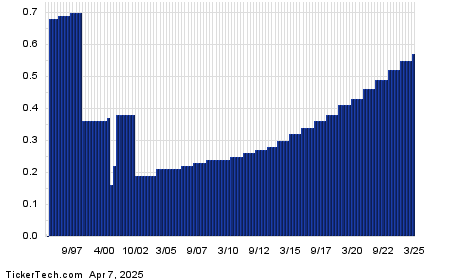Crude Oil and Gasoline Prices Slide Amid Market Concerns
May WTI crude oil (CLK25) closed Monday down -1.29 (-2.08%), while May RBOB gasoline (RBK25) fell -0.0344 (-1.67%). This decline marks the third consecutive day of price drops for both commodities, with crude reaching a four-year low and gasoline sinking to a six-week low.
Market Pressures Impacting Energy Prices
Persistent tariff turmoil is contributing to the downward trend in energy prices. The ongoing global trade tensions raise fears that an escalation could negatively impact the global economy and energy demand. Additionally, the dollar’s strength on Monday added pressure on crude pricing. Further exacerbating the situation, Saudi Arabia announced on Sunday a price cut for its oil—$2.30 a barrel for May deliveries, the steepest drop in over two years. This move weighed heavily on crude prices alongside a significant decline in the S&P 500, which hit a 14-month low, shaking investor confidence in the economic outlook and energy demand.
In response to demand fluctuations, crude prices are also reacting to OPEC+’s recent announcements. The coalition revealed it would boost crude production in May by 411,000 barrels per day (bpd), significantly more than the 138,000 bpd increase seen this month. OPEC+ aims to gradually reverse the two-year-long production cuts, seeking to restore a total of 2.2 million bpd. While the plan aimed to return to full production by late 2025, recent developments now suggest that this target may extend to September 2026. Notably, OPEC’s crude output reached a 13-month high of 27.43 million bpd in March, up by 80,000 bpd.
Inventories and Global Supply Factors
Moreover, a report from Vortexa highlighted an increase in crude oil being stored on tankers. The stationary oil held on tankers for over a week rose by 4.3% week-over-week to 58.56 million barrels for the week ended April 4, reinforcing negative market sentiments.
Encouragingly, crude oil prices found some support following the US Treasury Department’s sanctions on March 20 targeting a China-based oil refinery and 19 entities linked to shipping Iranian oil. This move aimed at applying pressure on Iran’s crude exports amid ongoing nuclear negotiations. Rystad Energy A/S estimates that a maximum-pressure campaign could potentially remove up to 1.5 million bpd of Iranian oil from global markets, presenting a bullish factor for crude.
Geopolitical Tensions and Regulatory Actions
Compounding the situation, tensions in the Middle East posed additional risks to crude supply. Recently, Israel resumed airstrikes in Gaza, terminating a two-month ceasefire with Hamas. Prime Minister Netanyahu’s commitment to increasing military actions against militants heightens fears of supply disruptions. Simultaneously, US military action against Yemen’s Houthi rebels signals a potential for ongoing conflict affecting regional oil supply security.
In January, the US imposed new sanctions on Russia’s oil sector, targeting Gazprom Neft and Surgutneftgas, firms which collectively exported approximately 970,000 bpd of Russian crude last year. Such measures are expected to further tighten global oil supplies. Meanwhile, Russian oil product exports peaked at a five-month high of 3.45 million bpd in March, as tracked by Bloomberg and Vortexa data.
US Inventory Levels and Rig Count
The recent EIA report indicated that US crude oil inventories were down 4.6% compared to the seasonal five-year average as of March 28. In contrast, gasoline inventories were reported to be up by 2.0%, while distillate inventories decreased by 6.0%. US crude oil production remained steady at 13.58 million bpd, just under the record high of 13.631 million bpd set in December.
Additionally, Baker Hughes reported an increase in active US oil rigs, which rose by five to reach a ten-month high of 489. This uptick contrasts sharply with the three-year low of 472 rigs noted in January. Over the past two years, the number of operational rigs has decreased from a high of 627 in December 2022.
On the date of publication,
Rich Asplund
did not have (either directly or indirectly) positions in any of the securities mentioned in this article. All information and data in this article are solely for informational purposes. For more information, please view the Barchart Disclosure Policy
here.
More news from Barchart
The views and opinions expressed herein are the views and opinions of the author and do not necessarily reflect those of Nasdaq, Inc.


